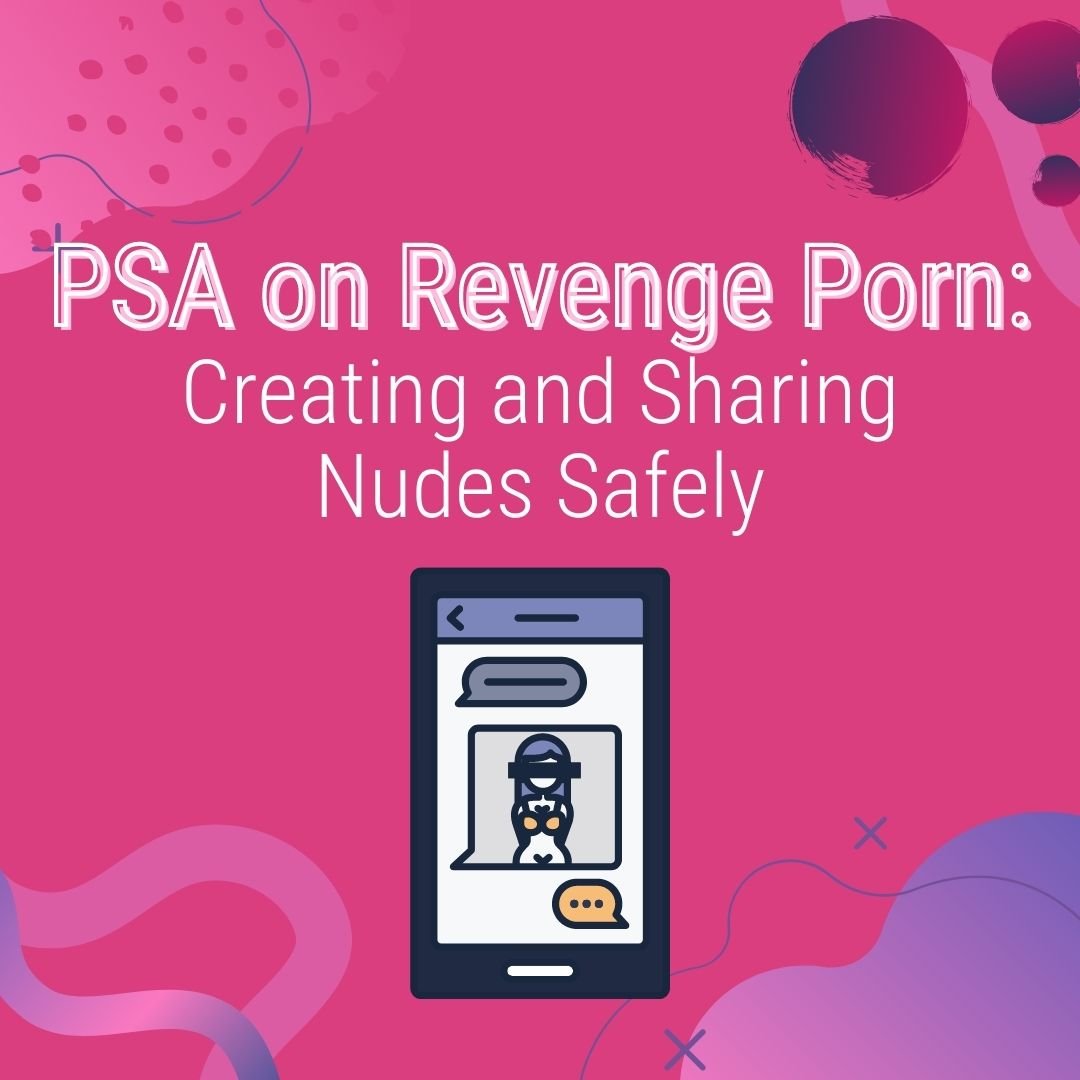Sharing intimate media, sometimes called “sexting,” can be a special way to connect with other people, particularly one’s sexual partners, that is exclusive to the digital age. It is not always safe, though, and unfortunately can be manipulated by others with the speed and insecurity of the internet. Media shared with others or stolen off of personal devices can be distributed easily and quickly without the consent of the subject, which can lead to a number of personal damages including job insecurity, personal strife, and loss of family and friends. Nonconsensual pornography is defined as the sharing of sexually explicit content without the subject’s consent. This can take the form of photographs taken by the subject or of the subject, video recordings of the same nature, and hidden cameras, and is sometimes referred to as “revenge porn.” The center Love is Respect categorizes revenge porn as digital and sexual abuse, citing the manipulation and extortion that is exercised over another person.
Creating and sharing pornography for or for people under the age of eighteen is always a federal offense, even if done by the minors themselves. This is upheld under the Protection of Children against Sexual Exploitation Act, which covered minors up to age sixteen in 1977 and then up to age eighteen in 1984. Outside of minor protection laws, as of 2021, there were no federal regulations on the issue that apply to adults, but forty-eight of U.S. states have passed bans against nonconsensual porn. In March of 2022, the White House reauthorized the Violence Against Women Act, instating a more comprehensive “civil cause of action” for victims of such cybercrimes. Protection against these crimes was originally proposed in the Violence Against Women Act but was not included in its original passage. Now, survivors of such cyber abuse crimes have legal grounds to reclaim damages and legal fees from their offenders.
The National Association of Attorneys General shares statistics on nonconsensual pornography. As of 2020, four out of five adults have “sexted” using explicit photos of themselves. Eighty percent of nonconsensual porn was originally created and sent between intimate partners, and then was shared without consent outside of the partnership. While some of this porn is posted anonymously, most are sent to people the subject knows or posted along with identifying information and contact information. This category of digital media can also include media captured by subjects without their knowledge, which includes “upskirt” photos, hidden camera videos, or nonconsensual sex tapes. Once online, this media exists alongside consensual recreations of these types, which makes isolating and flagging them all the more difficult.
Unfortunately, the online world had space for specific platforms designed to share amateur pornography that was specifically submitted or published by users anonymously. In 2015, the Internet purged many of these websites that were allowing users to post nonconsensual porn without the subject’s consent. Still, with the speed and access of the online world, there’s currently no way to keep up with the spread of content while ensuring it was posted with consent. I believe this is one of the primary barriers to protecting subjects and enforcing consent online. As a woman myself, I was always cautioned against creating intimate media for fear of it “ruining my life” and my generation is still hoping for the day in which such media won’t end a woman’s career.
While the online danger of nonconsensual porn is real, it’s important to also acknowledge that the subject of pornography is never at fault, even if they were the original creator of the media. No one under the age of eighteen should ever participate in such production (and they can actually be charged with child pornography for doing so) but adults over the age of consent should absolutely be free to share their bodies as they desire. Beautiful art forms have come out of intimate media– think Renaissance nudes—and from the standpoint of the appreciation of the human form, nudes can be really significant. Physical media like film photos can also be a special gift for an intimate partner and something they can keep forever. There are factors to keep in mind, though, that can help you remain safe and legal.
First, when deciding to create sexual media, take the time to consider your intentions. Intentionality remains so important in making decisions that align with your values, and if you put the effort into making intentional decisions, you will stand behind them years in the future. Most importantly, remember consent at every point in the process. Both the subjects in the media and the receivers should consent to their part in the creation and distribution beforehand, and consent can be revoked or reconsidered at any time. Once your media is shared online, it really is out of your hands, which means that anything can happen. Knowing this, people can make informed decisions about sharing their media. At the same time, this is a reason to progress the societal standard for online media and protect subjects from defamation of character.
By Sydney Sullivan




